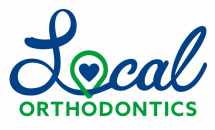Common Orthodontic Issues
Common Orthodontic Problems
Unfortunately, most of us aren’t born with perfectly aligned teeth. According to Humana, about 4 million Americans wear braces to correct common orthodontic problems. 90% of people could benefit from orthodontic treatment, and only 10% of people have a naturally-occurring ideal occlusion!
Although many people experience these common problems, every case is different. At Local Orthodontics in Johnson City, we take a personalized approach toward each patient. We consider various factors, including your age, your symptoms, and your goals, when suggesting a treatment for these common orthodontic problems.
The best treatment method for someone else may not be the best treatment method for you, so we will design a treatment plan customized to suit your specific condition, your lifestyle, and your preferences. Dr. Jewett’s years of expertise and experience enable him to treat a number of orthodontic conditions, ranging from mild to severe.
Check out these common orthodontic problems that we treat using Invisalign, braces and more.
Crowding
Teeth become crowded when there isn’t enough room in the mouth to accommodate them. When teeth are crowded, maintaining oral hygiene becomes more challenging, because it can be difficult to floss or brush between overlapping teeth. Depending on your specific condition, we may suggest a treatment with Invisalign or braces, followed by a retainer. Some patients need to expand the palate to allow the necessary space for teeth to grow properly.
Gapped or Spaced Teeth
When there is a space between two teeth (commonly the front two teeth), the teeth are considered “gapped”. This can be caused by under-sized teeth, missing teeth, and poor habits (like thumbsucking or tonguethrusting). To treat gapped teeth, Dr. Jewett may suggest a treatment plan using Invisalign or braces, followed by a retainer, to align the teeth and close the additional space.
Gummy Smile
A gummy smile is a smile that reveals an excess of gum tissue above the top teeth. People who have a gummy smile may feel self-conscious about their appearance. Overexposed gums can also increase the risk of gum disease, poor oral health and bad breath. At our Johnson City office, we can treat gummy smiles with a form of braces, TADs (temporary anchorage devices), or possibly jaw surgery depending on the severity of the condition.
Overbite
An overbite is a common malocclusion, or misaligned bite. When the top teeth are positioned forward, covering the bottom teeth, this is called an overbite. This condition can be a result of genetics and poor skeletal or dental development. Openbites are often caused by poor habits, such as thumbsucking and tonguethrusting. We often treat overbite cases with bite plates, or with Invisalign and braces.
Underbite
An underbite is a malocclusion condition, where the lower teeth are positioned forward, covering the top teeth. (This is the opposite of an overbite condition.) Underbites are typically caused by genetics, but can also be a result of poor skeletal development, thumbsucking and tonguethrusting in the early years. For this condition, we may suggest a treatment of Invisalign, braces with rubber bands, or possibly extractions or jaw surgery with braces depending on the severity.
Crossbite
A crossbite describes a malocclusion where some upper teeth are positioned behind or inside the lower teeth, while the rest of the upper teeth are positioned properly over the lower teeth. This type of bite condition can be caused by genetics, poor skeletal development, delayed loss of baby teeth or abnormal eruption of permanent teeth. To treat a crossbite condition, Dr. Jewett may suggest orthopedic expanders or retainers, or braces or Invisalign.
Open bite
In an open bite position, the upper teeth and lower teeth do not touch when the mouth is closed. The teeth remain in an opened position, which disables the tongue from resting against the teeth during speech. This can cause swallowing problems and speech problems. A custom treatment plan of Invisalign, braces, TADs, extractions or possible jaw surgery can be an effective treatment measure to realign the bite.
Overjet
It’s natural for the top teeth to extend outward over the lower teeth to a certain degree, but teeth that extend too far outward are considered to be in an overjet position. Overjet teeth are sometimes referred to as “buck teeth” and can result from an underdeveloped lower jaw, as well as thumbsucking and tonguethrusting habits. These teeth will often rest over the bottom lip, with lips apart. To treat an overjet position, Dr. Jewett may suggest a treatment of Invisalign, braces with rubber bands, or growth modification treatment.

